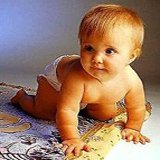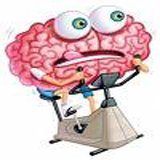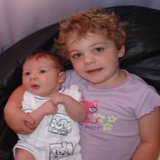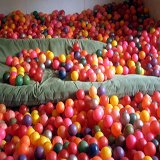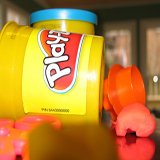Stimulating Baby Movements -
31 to 36 Months
Baby movements between the 31 month old development and 36 month old development, are more agile.
He tackles any obstacle in the playground and loves joining in energetic activities with his friends.
|
He still gets into difficulties from time to time, however so dont be surprised to hear him screaming when he gets all the way to the top of the climbing frame and then suddenly freezes, unable to descend alone.
Suitable suggestions for Baby Movements
(31 Month Old - 36 Month Old)
Outdoor Play Areas
Your child will have a go at anything involving baby movements now.
Take running, for instance. Your 3 year old dashes about furiously whenever the opportunity presents itself.
You can help improve his speed, balance and hand eye coordination by setting up mini tracks for him to race around.
Create outdoor play areas in the garden and set out three small chairs about five meters apart, in a triangular formation. Suggest that your child run around the chairs, until he arrives back at the first one.
He will manage to turn at the three corners, without greatly slowing down his pace, as long as he concentrates on the task at hand.
Pedal Toys
When your child plays for instance with a pedal tractor toy, he can probably turn the pedals using his feet.
Show your child how to place his soles on each pedal and then how to push so that the wheels turn.
Initially, he will probably want to put his feet back on the ground, in order to propel himself along in the way that hes used to.
But with your continued encouragement, and his perseverance, hell eventually find that he can use pedal power to get the pedal tractor toy moving.
Once hes made this discovery, therell be no stopping him as he perfects the technique used for pedal toys.
Hop Scotch
Try teaching him how to hop on one foot; though dont be surprised if this skill is beyond him at this stage.
Hopping is a complex challenge, requiring good coordination between both sides of the brain, and your 3 year old may simply not have the neurological maturation yet to achieve this.
But theres no harm in trying it he may just over-balance when he tries.
Toddler Outdoor Play
Toddler outdoor play is crucial for the development of your childs baby movements and fundamental movement skills.
Of course there is plenty you can do with him indoors there is no child development physical skill that cant be practised at home.
The benefits of outdoor play on large, safe outdoor play sets gives your child all the freedom he needs to experiment and to learn extent of his agility.
A small slide and ladder in the garden, along with perhaps a balancing log and a secure swing, provide endless hours of amusement for him.
Hell have even more fun if you are able to take him to an adventure play area in the local park where he can also interact with other children.
Top Tips for Baby Movements
(31 Month Old - 36 Month Old)
- Play fundamental movement games.
- Use positive reinforcement.
- Do "pretend" marching.
- Let him walk along a log.
- Have fun with your child.
Have him face you and ask him to do what you do.
Then do actions such as bending, lifting your leg, waving your arm, and so on.
He'll make a good attempt to copy you.
He is more likely to succeed in pedaling the tricycle, for instance, if he knows you are waiting for him further along the path.
Although he has built-in motivation, incentives such as cuddle also help.
Put on appropriate rhythmic movement music and tell your child to follow you around in the room, moving his arms, and legs like you.
He'll chuckle as he tries to coordinate his baby movements to simulate your marching style.
He'll probably fall over, so you will need to hold his hand as he walks along it.
This is a very difficult activity for your child, but a good way to encourage his balance and fundamental movement skills.
No matter what you do to enhance your child's fundamental movement skills, make sure you plan lots of fun activities for kids.
If you push him too hard, or if the games become too serious, he won't learn anything else.
Top Toys for a 31 Month Old - 36 Month Old
- tricycle and other pedal toys such as pedal tractor toy
- slide
- climbing frame
- see-saw
- swing bouncer
- balls for kicking and throwing
Be sure to browse through all the baby brain development pages that is broken down in different age groups.
Find It!
Can't remember where you read something specific? Just type in your search term in the box below and your specific topic will be returned to you instantly.





